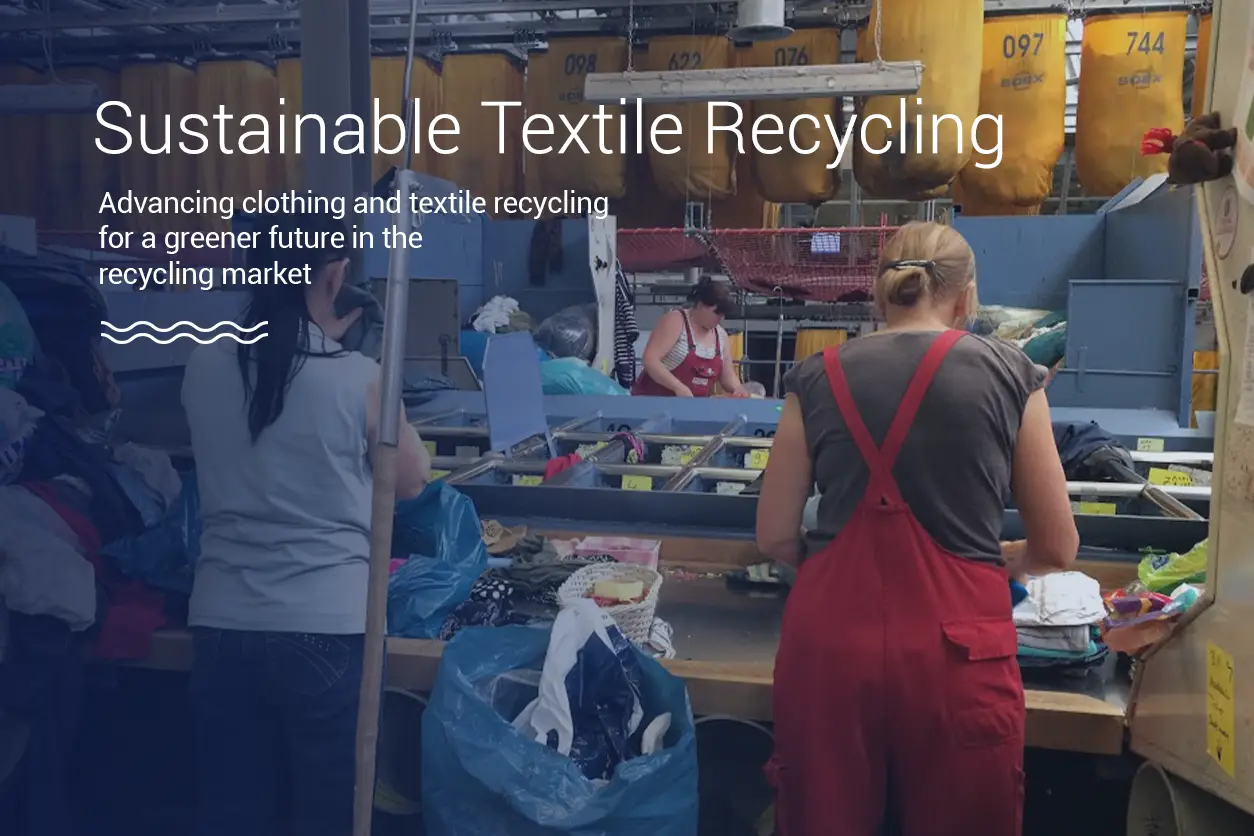Advancing Sustainable Fashion through Clothing & Textile Recycling Technologies
Our advanced technologies in clothing and textile recycling encompass:
Mechanical Recycling: This process involves breaking down textiles into fibers, using machines like shredders and carding equipment, suitable for creating new yarns and fabrics.
Chemical Recycling: Utilizing chemicals, this method breaks down textiles to their basic components, reforming them into high-quality fibers, akin to virgin materials.
Thermal Recycling: Converting textiles into energy through processes like pyrolysis, using high-temperature reactors for sustainable energy generation.
Digital Sorting Technologies: Employing AI and machine learning for automated textile sorting, ensuring efficient recycling processes.
These diverse technologies collectively contribute to a sustainable, efficient, and innovative approach to textile recycling.
Clothing & Textile Recycling Technologies
Our advanced technologies in clothing and textile recycling encompass:
Mechanical Recycling: This process involves breaking down textiles into fibers, using machines like shredders and carding equipment, suitable for creating new yarns and fabrics.
Chemical Recycling: Utilizing chemicals, this method breaks down textiles to their basic components, reforming them into high-quality fibers, akin to virgin materials.
Thermal Recycling: Converting textiles into energy through processes like pyrolysis, using high-temperature reactors for sustainable energy generation.
Digital Sorting Technologies: Employing AI and machine learning for automated textile sorting, ensuring efficient recycling processes.
These diverse technologies collectively contribute to a sustainable, efficient, and innovative approach to textile recycling.
Implementation Strategies for Clothing & Textile Recycling
To effectively implement clothing and textile recycling, we focus on comprehensive strategies that encompass industry collaboration, consumer involvement, and continuous innovation:
Industry Partnerships: Forge partnerships with fashion brands and textile manufacturers to integrate recycling solutions into their supply chains. This collaboration facilitates the use of recycled materials in new product lines, promoting sustainable fashion.
Consumer Engagement: Implement educational campaigns to raise awareness about the importance of textile recycling. Establish convenient collection systems for used clothing, making it easier for consumers to participate in recycling initiatives.
Innovation and R&D: Continuously invest in research and development to explore new recycling technologies and improve existing methods. Stay updated with the latest advancements in textile recycling to enhance efficiency and effectiveness.
Regulatory Compliance and Advocacy: Ensure all recycling processes comply with environmental regulations. Actively advocate for policies that support and promote textile recycling, contributing to the industry's sustainability.
Market Development: Identify and develop markets for products made from recycled textiles. Engage in marketing efforts to increase the demand and acceptance of recycled textile products.
Technological Integration: Seamlessly integrate advanced recycling technologies into existing textile production processes. Collaborate with tech providers to tailor solutions to specific industry needs.
By implementing these strategies, we aim to not only enhance our textile recycling processes but also contribute to the broader goal of sustainable fashion, aligning with global efforts towards environmental conservation and responsible resource management.
Challenges and Solutions in Clothing & Textile Recycling
Challenge 1: Maintaining Quality of Recycled Textiles
Solution: Implement stringent quality control measures and invest in technologies that enhance the integrity of recycled fibers, ensuring they meet industry standards.
Challenge 2: Consumer Participation
Solution: Launch educational campaigns and convenient collection initiatives to encourage consumer involvement in recycling programs.
Challenge 3: Economic Feasibility
Solution: Optimize recycling processes for cost-effectiveness and develop markets for recycled textile products to ensure economic viability.
Challenge 4: Technological Integration
Solution: Continuously adapt and update recycling technologies to align with current textile materials and industry practices, ensuring efficient and effective recycling operations.
Conclusion: Forging a Sustainable Path in Clothing & Textile Recycling
In conclusion, the journey towards sustainable fashion through clothing and textile recycling is both challenging and rewarding. As a climate tech enviro services organization, we are uniquely positioned to make a significant impact in this sector. Our commitment to integrating advanced recycling technologies marks a pivotal step towards addressing the pressing environmental issues posed by textile waste. By transforming discarded fabrics into valuable resources, we not only contribute to waste reduction but also promote a circular economy in the fashion industry.
Our comprehensive approach, which combines innovative technologies with strategic implementation, is designed to overcome the inherent challenges in textile recycling. Through maintaining the quality of recycled textiles, encouraging consumer participation, ensuring economic feasibility, and adapting to technological advancements, we are paving the way for more sustainable practices in the fashion sector.
Furthermore, our efforts extend beyond the technical aspects of recycling. We are actively involved in shaping consumer perceptions and industry norms towards a more sustainable future. Through educational campaigns, collaboration with fashion brands, and advocacy for supportive policies, we are influencing a shift towards more responsible consumption and production patterns.
The road ahead requires continued innovation, collaboration, and dedication. We are committed to staying at the forefront of technological advancements, adapting our strategies to meet the evolving needs of the industry, and expanding our reach to make a more significant environmental impact. By doing so, we aim to set new standards in sustainable fashion, inspiring others in the industry to follow suit.
In essence, our role in clothing and textile recycling is not just about managing waste; it's about leading a transformation in how the world views and uses textiles. It's about creating a future where sustainable fashion is not just a choice but a standard. As we move forward, we remain dedicated to our mission of making this vision a reality, contributing to a greener, more sustainable world for generations to come.

